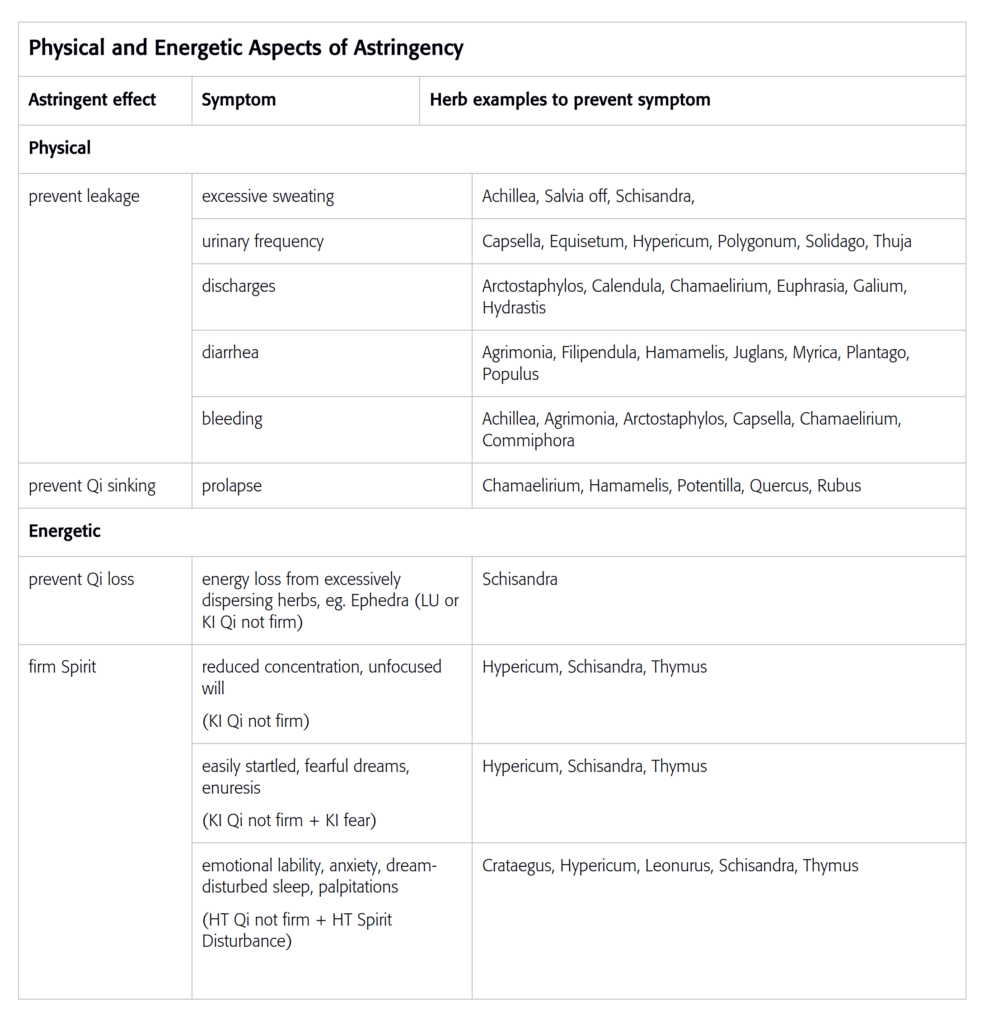Lesson 4: Balance TASTES in a herbal combination
Tastes and ICM The account of the taste properties given below is based on the integration of concepts from:
- Western herbal tradition
- Chinese medicine
- modern pharmacological and clinical research
Safety and effectiveness
The concept of taste properties is a sophisticated system for balancing herb combinations so that they are maximally effective and safe.
There are two aspects of taste in herbal medicine:
- subjective taste in the mouth
- taste as a theoretical concept
Taste in mouth and taste in theory
Taste as a concept or ‘herb property’, relates to the theoretical effect that the herb has on the body, and this may or may not agree with the taste in the mouth.
Example
Panax ginseng is classified as sweet in Chinese medicine, referring to its property as a general tonic. But to most Westerners, brought up on a diet with massive amounts of sweet foods, it tastes more bitter than sweet.
Simplified system
This database concentrates on 5 main taste properties:
- bitter
- sour-astringent
- sweet
- acrid
- aromatic
This database does not use the ‘salty’ or ‘bland’ Chinese taste categories, but these are briefly discussed in the ICM Master database.
Clinical imortance of taste
As stated in the Introduction to Principles of Herb Combination, taste is a complex topic, and understanding taste does require some knowledge of Chinese medicine, so it is only briefly discussed here in The Herbalist, and in much greater detail in ICM Master.
Bitter
Very simply, we can say that there are three main actions for herbs that taste bitter in the mouth:
- tonic digestive and hepatobiliary tonics, eg Artemisia absinthium, Gentiana, and Silybum
- antimicrobial and anti-inflammatory eg. Berberis, Hydrastis, and Scutellaria baicalensis
- anxiolytic and sedative eg. Anemone, Humulus, and Piscidia
Sour-astringent
Sour and astringent can be difficult to separate in tastings, especially for herbs that have both sour and astringent constituents. For example, Rumex leaves have both sour oxalic acid and astringent tannins.
The sour taste and the astringent effect can be differentiated as follows:
- sour taste acid taste like lemon juice or vinegar
- astringent effect puckering, drying effect on the mouth and tongue
Overlap
However, the sour and astringent properties have been grouped together in this database, as ‘sour-astringent’, due to difficulty in separating these two effects.
Sour taste sensation Hydrogen ion channels
Degree of sourness is based on degree of acidity, and maybe hydrogen-ion channels in tongue receptors detect proton concentration associated with an acid, such as acteic acid in vinegar.
Astringent taste sensation Protein-binding Astringent substances can bind to the proteins of the saliva, mucus membranes, or skin, causing them to aggregate.
Protective effect
This produces a puckering, drying, rough sensation in the mouth, with a protective effect from temporary shrinking and hardening of damaged tissue surfaces.
Use
Astringency can treat skin wounds, damaged mucus membrane, excessive mucus or discharges, diarrhea, and bleeding
Examples
The commonest astringent plant constituents are tannins, eg. in Polygonum (20%), or Rubus (2.5-11%).
Herbs that stabilize and bind
Physical effect Western herbal tradition focuses on the physical aspects of the astringen property of tannins, eg. reducing diarrhea, discharges, and bleeding.
Mental-emotional effect But Chinese medicine has an extra important concept for sour-astringent herbs, dealing not only with physical leakages, but also with stabilizing mind and emotions. This is summarized in the following Table.

Sweet
The sweet taste property is associated with herbs that, to a greaterr or lesser degree, taste sweet in the mouth. But to many Westerners, accustomed to the intensely sweet taste of sugar, some herbs described as sweet in Chinese medicine, have minimal sweet taste in the mouth.
Very simply, we can say that there are four main actions for herbs that taste sweet in the mouth:
- sweet stimulant tonics may have a relatively fast stimulant effect on the energy, and often contain triterpenoid saponins: examples are Panax ginseng and Glycyrrhiza
- nutritive sweet tonics with a relatively slow tonic effect on the energy, based on their nutrient content, of sugars, starches, oils, proteins, minerals, and vitamins: examples are Avena, Serenoa, Lycium fruit, Ziziphus fruit
- anti-inflammatory sweet tonics: this action may be due to demulcent mucopolysaccharides, as in Althaea, or a variety of chemicals, as in Ophiopogon or Viola
- immuno-regulatory sweet tonics; this action may be due to immuno-polysacharides, eg. astragalan in Astragalus
Aromatic
Olfactory receptors
Aromatic chemicals my have their main pharmacological effect by stimulating olfactory receptors in the nasal membranes. Olfactors receptors may be of different types, each sensitive to a different group of aromatic chemicals.
Monoterpenoids
Oils from plant materials contain aromatic substances that are volatile at room temperature. These substances are mainly monoterpenoids, for example, Lavandula conteains the alcohol linalool, Cinnamomum contains the aldehyde cinnamaldehyde, and Thymus contains the phenol thymol.
Action groups
Very simply, we can say that there are four main actions for herbs containing aromatic chemicals:
- carminative
- anxiolytic
- antidepressant
- drying
Carminative This action regulates the function of the gastrointestinal system. Carminative herbs can both initiate peristalsis and relax spasm of the intestinal smooth muscle, and so can be used for abdominal distension, discomfort, and pain, with flatulence.
Examples: Acorus, Lavandula, Mentha piperita, Pimpinella, Rosmarinus, Zingiber.
Anxiolytic Aromatic herbs can treat emotional disturbance, eg. anxiety, insomnia, palpitations, headaches and migraine. They have their calming action by their lightening and dispersing nature.
Examples: Lavandula, Melissa, Mentha pulegium, Salvia officinalis, Thymus.
Antidepressant Aromatic antidepressant herbs are specific for depression associated with stagnation of energy (Qi Stagnation).
The aromatic property has its effect on depression by:
- relaxing constraint
- dispersing obstruction
- lightening heaviness
- lifting mood
Examples: Melissa, Rosmarinus, Turnera
Drying If the digestive system is weak, in some people, this may result in the accumulation of damp and phlegm in the body, with sensations of physical and mental heaviness and slowness, and mental dullness. This can also contribute to obesity.
The aromatic property is characterized by its lightening effect on the body, so that it can form a natural counter to the sinking effect of excessive damp.
Examples: not all aromatic herbs can clear damp from the body, but some are specific, eg. Acorus, Angelica archangelica, Juniperus, and Zanthoxylum
Acrid
Mouth and tongue
The acrid property, also known as pungent or spicy), can be associated with a range of sensatins on the mouth or tongue:
- the severe burning of Capsicum
- the prickling of Lobelia or Urtica
- the tingling and numbness of Echinacea or Zanthoxylum
Direction of energy
The acrid property is moving and dispersing. It can move stagnation of energy, stimulate the flow of blood through the blood vessels, and clear obstruction in the channels (meridians) and vessels, whether the obstruction is due to cold, damp, or phlegm.
Warming acid herbs: Circulatory stimulants
In the West, the main function associated with acrid herbs is circulatory stimulant. Some of these are classified as hot in temperature, eg. Capsicum, Cinnamomum bark, and dried Zingiber, and some as warm, eg. Cinnamomum twig, Myrica, Thuja, and fresh Zingiber. These herbs have a warming effect on the body, and each has its specific uses.
Examples
- Capsicum: specifically increases coronary circulation
- Zanthoxylum: specifically increases peripheral circulation
- Zingiber (fresh) specific for warming the surface of the body
Cooling acrid herbs
But not all acrid herbs are warming. The fundamental acrid property is dispersing, whether the herb is warming or cooling.
Examples
- Echinacea: clears invading pathogens from the body in acute infections, and also clears lingering pathogens that cause recurring infections
- Arctium seeds: clears pathogens and toxins from the body to treat acute sore throat, unexpressed rashe, and boils
- Phytolacca:clears damp and phlegm from the channels to treat rheumatism, psoriasis, lipomas, and obesity
